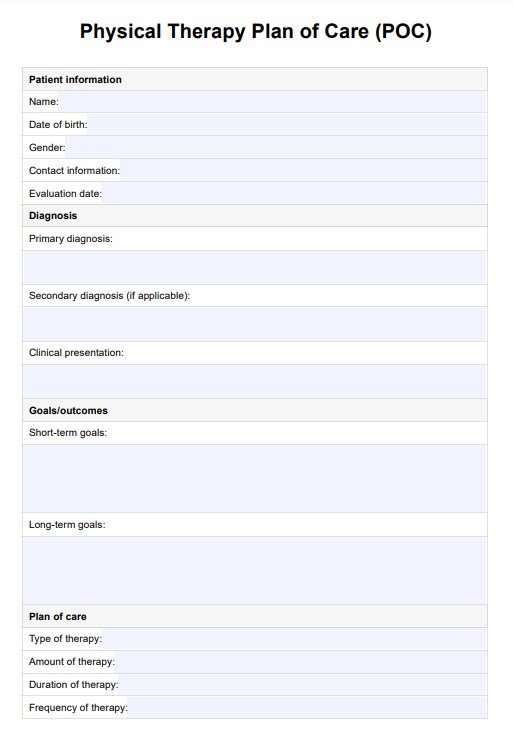A plan of care in physical therapy is a detailed, written document created by a physical therapist outlining the patient's treatment goals, interventions, and progress expectations. It serves as a roadmap to guide therapy, ensuring that all necessary treatments are provided to address the patient's specific needs.

Physical Therapy Plan of Care
Download Carepatron's free Physical Therapy Plan of Care PDF. Create effective treatment plans to enhance patient outcomes.
Physical Therapy Plan of Care Template
Commonly asked questions
A PT plan of care typically includes the patient's primary and secondary diagnoses and long-term and short-term treatment goals. It also needs to specify the type, amount, frequency, and duration of therapy services, as well as planned interventions and re-evaluation schedules.
The standard of care for physical therapy refers to the level of treatment and interventions that a reasonable therapist with similar training and experience would provide in a given situation. It ensures that care meets established medical guidelines and is appropriate for the patient's condition.
EHR and practice management software
Get started for free
*No credit card required
Free
$0/usd
Unlimited clients
Telehealth
1GB of storage
Client portal text
Automated billing and online payments











